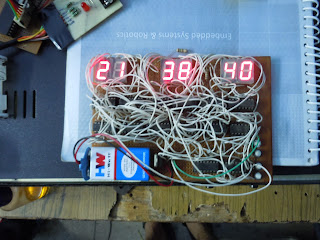DTMF Controlled Car
What is DTMF?
Dual-tone multi-frequency signaling (DTMF) is used for telecommunication signaling over analog telephone lines in the voice-frequency band between telephone handsets and other communications devices and the switching center. The version of DTMF that is used in push-button telephones for tone dialing is known as Touch-Tone
KEYPAD
The DTMF keypad is laid out in a 4×4 matrix, with each row representing a low frequency, and each column representing a high frequency. Pressing a single key (such as '1' ) will send a sinusoidal tone for each of the two frequencies (697 and 1209 hertz (Hz)). The original keypads had levers inside, so each button activated two contacts. The multiple tones are the reason for calling the system multifrequency. These tones are then decoded by the switching center to determine which key was pressed.
DTMF keypad frequencies (with sound clips) | ||||
1209 Hz | 1336 Hz | 1477 Hz | 1633 Hz | |
697 Hz | ||||
770 Hz | ||||
852 Hz | ||||
941 Hz | ||||
Block Diagram
As shown in the above block diagram, first block is a cell phone. So, it acts as a DTMF generator with tone depending on key pressed. DTMF Decoder i.e. CM8870 decodes the received tone and gives binary equivalent of it to the microcontroller. The microcontroller is programmed such that
Appropriate output is given to the motor driving IC L239D which will drive the two motors connected to it. The concept used for driving is ‘Differential Drive’. So ultimately the two motors rotate according to the key pressed on the cell phone.
Circuit used
DTMF decoder circuit used is shown below
The circuit for L293(motor driver IC) is shown below:
The above circuit connected together with a small C program






Comments
Post a Comment